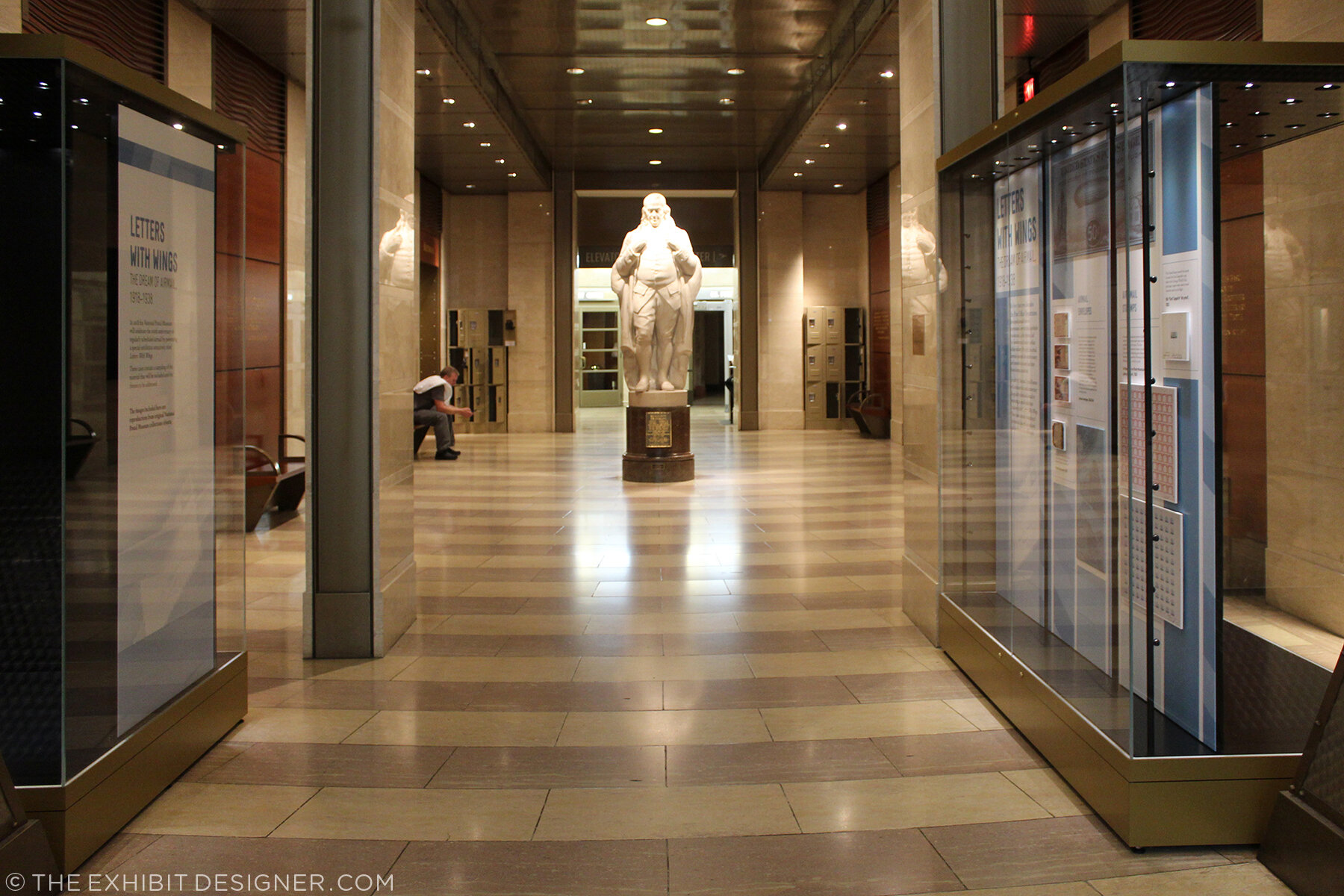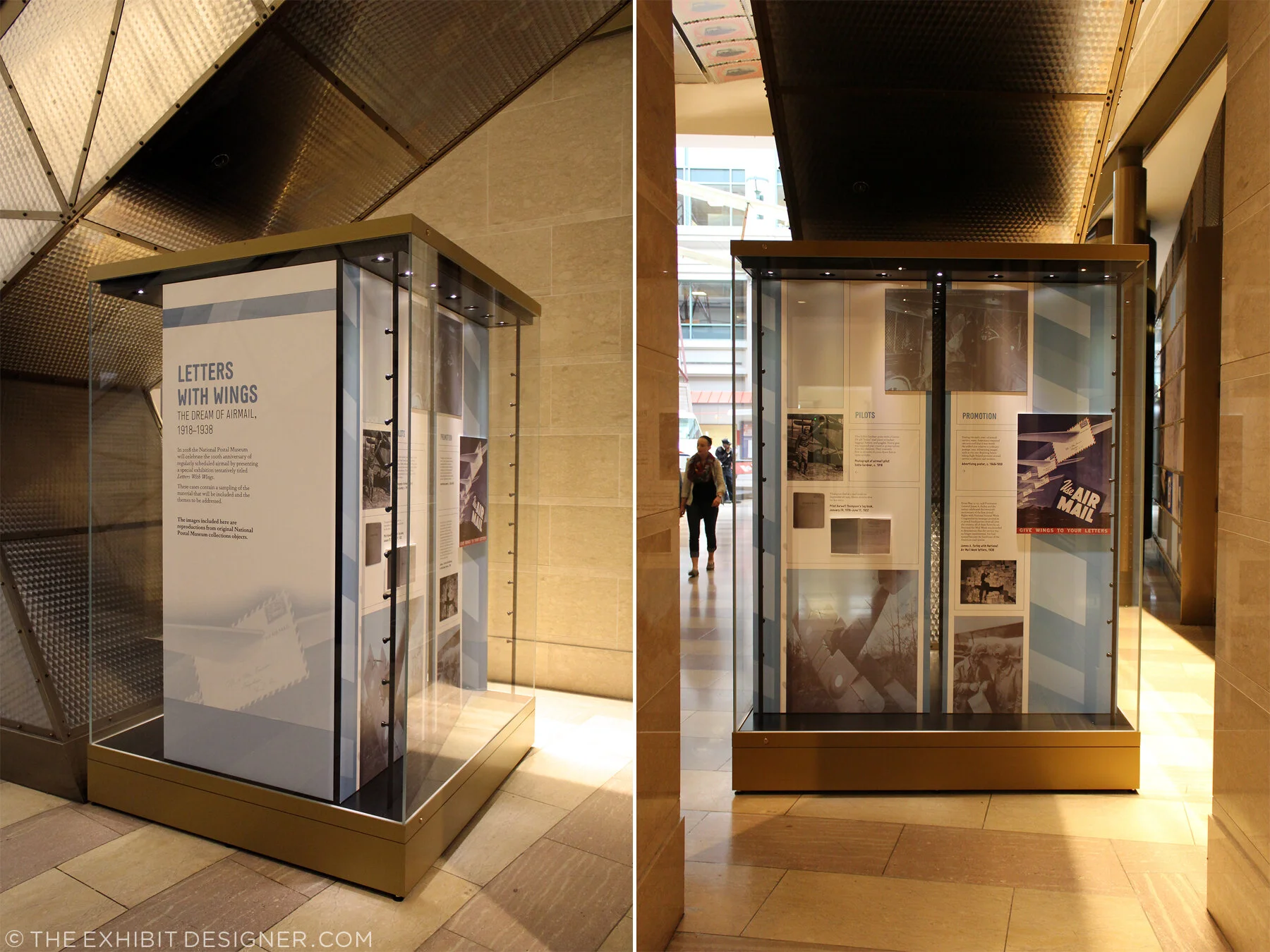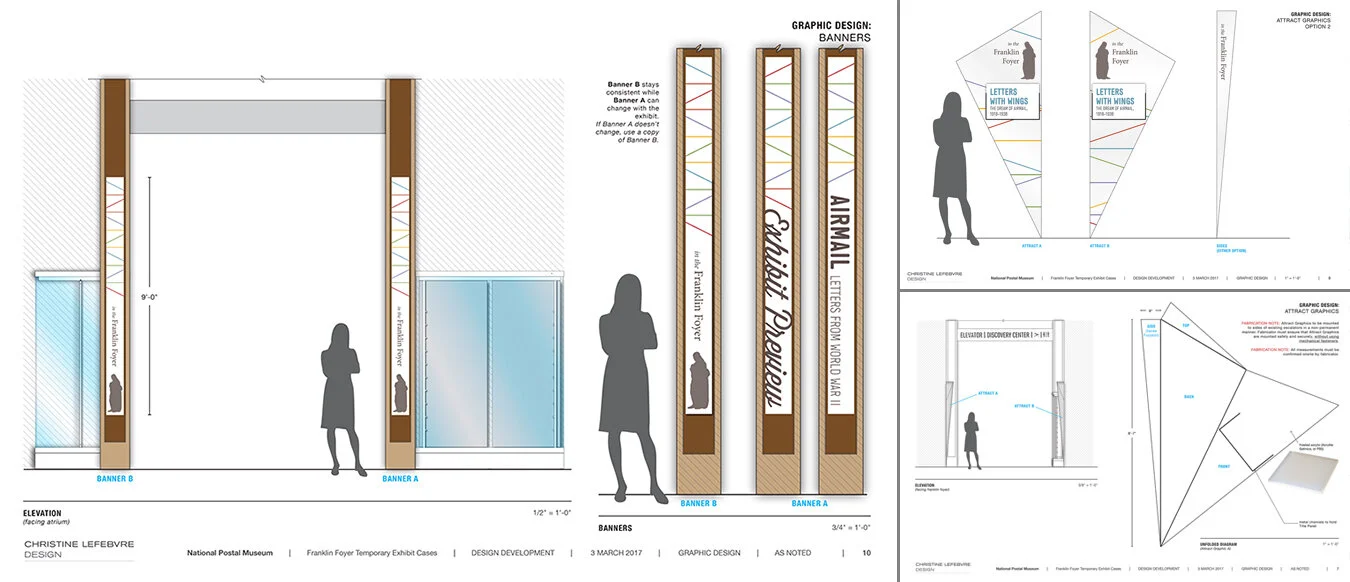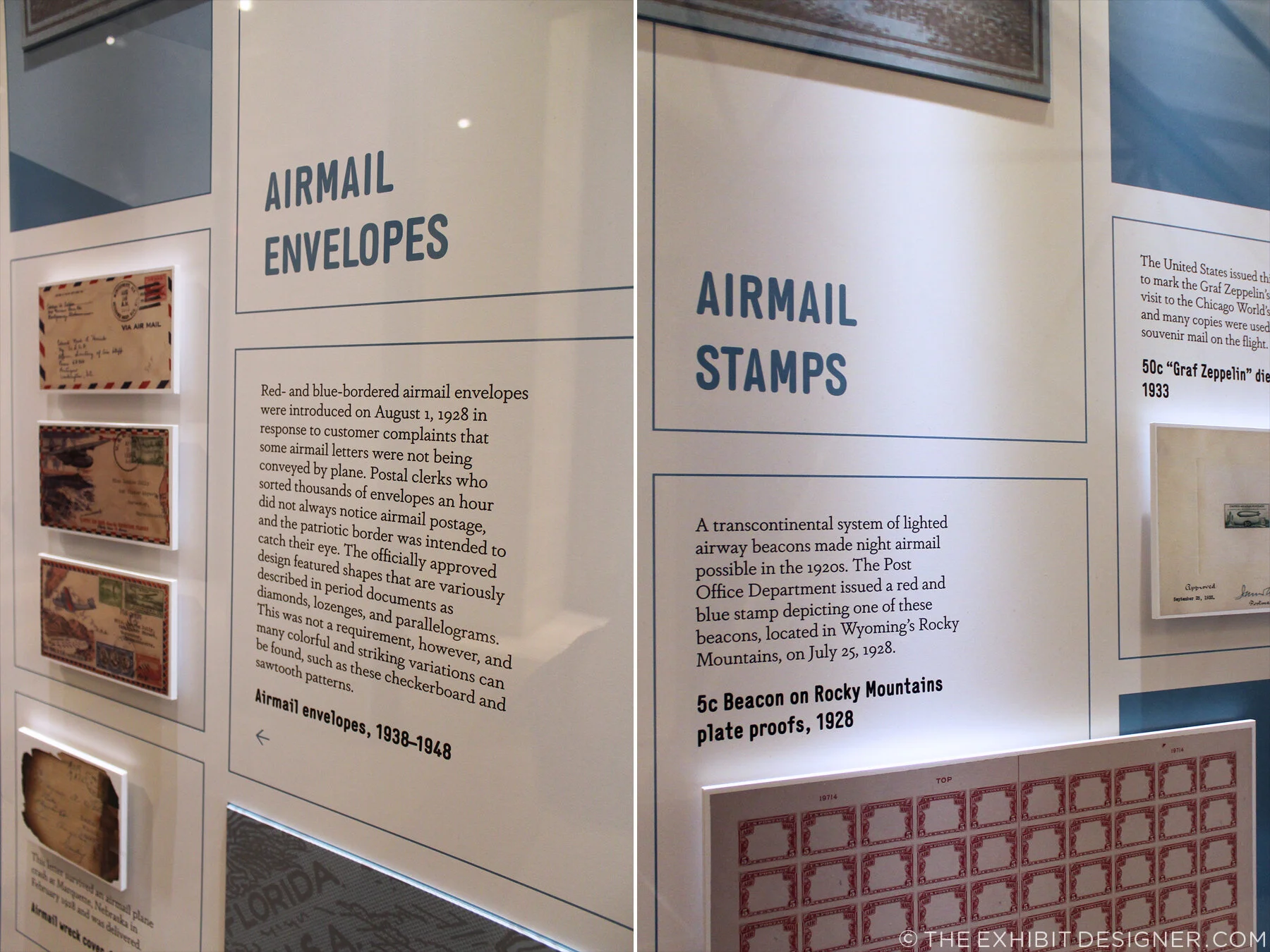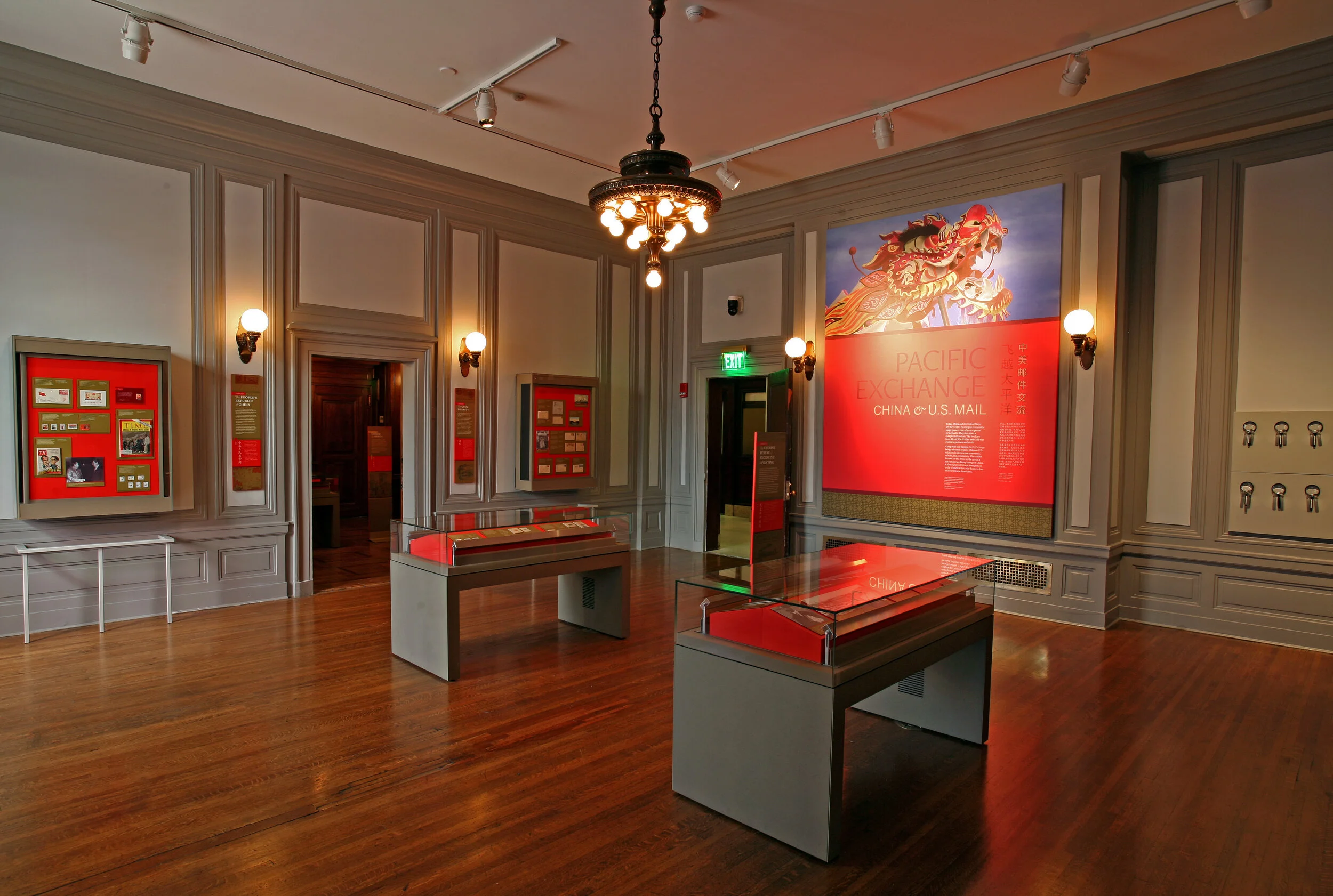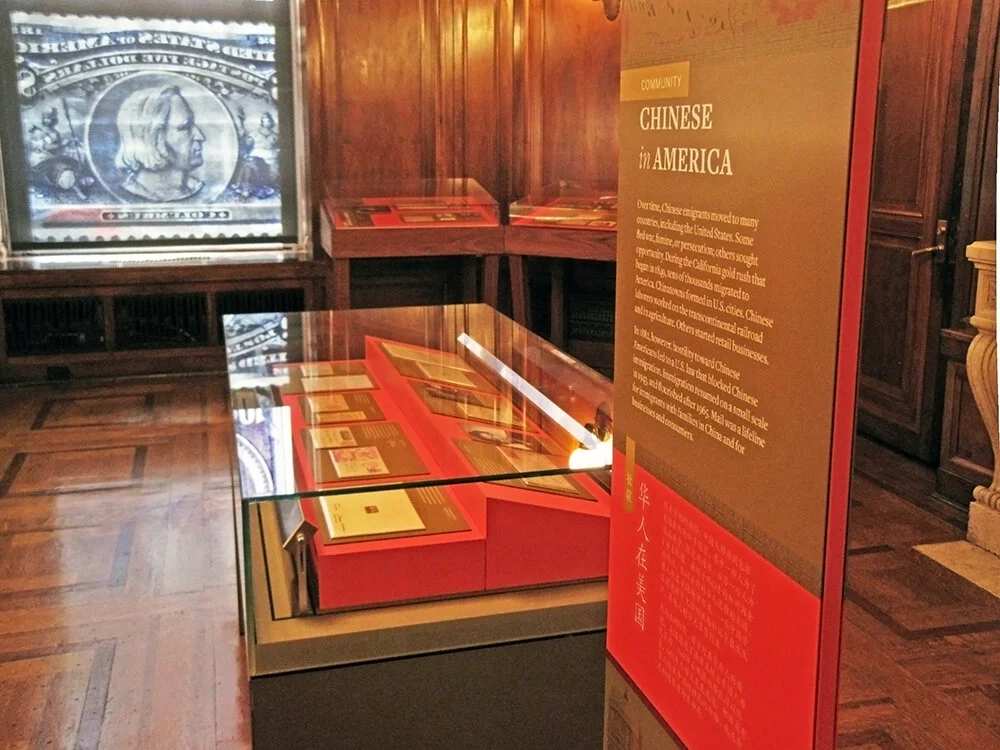If you stop by the Smithsonian National Postal Museum during the next couple of months, you’ll be able to see two exhibitions that I’ve designed. One is New York City: A Portrait Through Stamp Art (on view through May 14; full project view here); the other just opened.
Beneath the museum’s escalators, in the Franklin Foyer, are two cases for temporary exhibitions. The museum intends to change these cases often with displays of recent acquisitions, favorite objects, niche subjects, and the like.
I created a design system for the museum’s in-house use when putting together these quick little exhibitions, and I designed the first exhibition to use the system: a “sneak peek” of an upcoming exhibition about WWII airmail tentatively called Letters With Wings.
The design system included color palette, guidelines for layout of didactic and label graphics, sets of case furniture and graphic panels, and examples of case arrangements.
I also designed a series of banners and an “attract graphic” to brand the Franklin Foyer space. The attract graphic will be a geometric, cone-like acrylic structure with a changeable title panel; two will be installed in the open triangles of space between the artifact cases and the undersides of the escalators. (You can see the “open triangles of space” in the photos above.) They will protrude slightly into the space, above head level, and draw visitors’ attention from the atrium space. They’re not currently installed, but I look forward to seeing them there in the future.
There are no physical artifacts in either case of the currently installed exhibition, so objects are represented as printed graphics. (Docents will occasionally bring out the real objects for visitors, which are being prepared for the larger exhibition.) The printed representations are mounted to sintra (a lightweight, yet rigid, PVC sheet) to give them depth.
If you’re in the Washington, DC area, please check out this little exhibition — and New York Stamp Art, too — while they’re still on view!
Post updated in January 2021 with minor text edits. Broken links have been fixed. This post was originally published at theexhibitdesigner.com on 28 March 2017.

